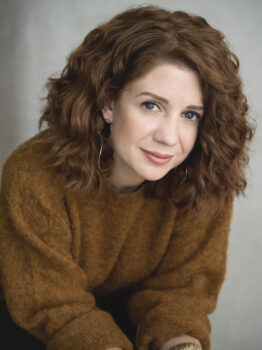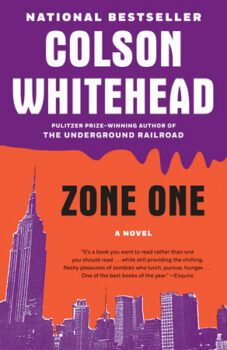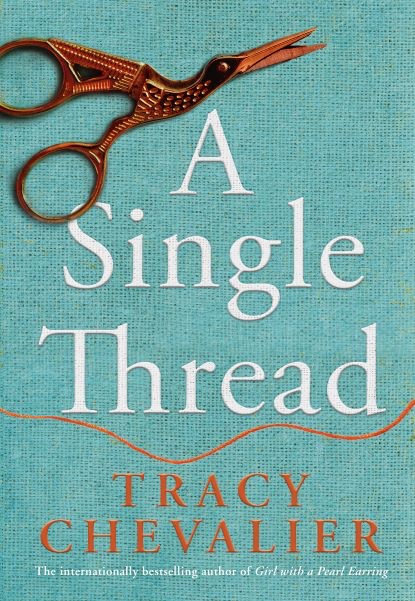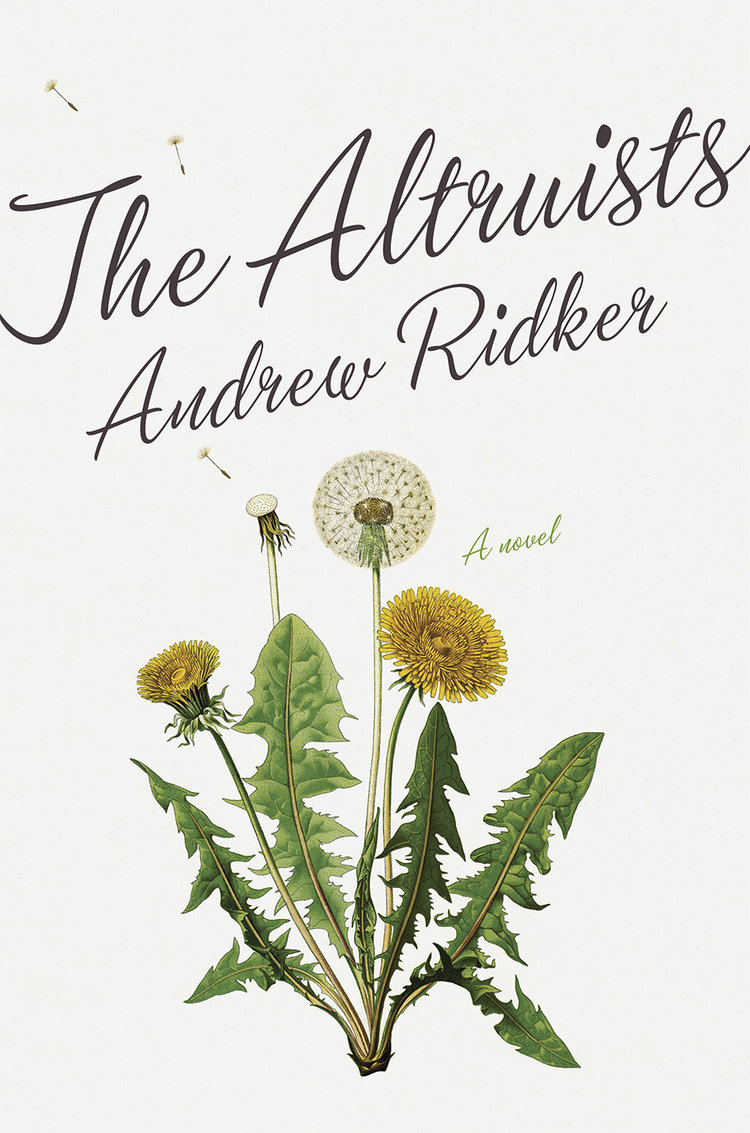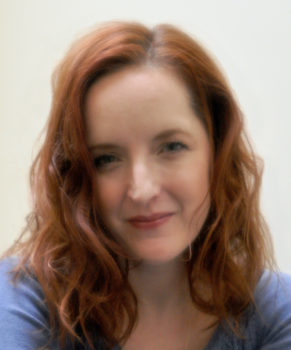Writers confront an intimidating infinitude of possibilities when they begin working on a novel. For most, the winnowing probably begins with decisions about plot, theme, and character, but embedded in the first moment of actual writing is another host of choices—those having to do with structure. This includes point of view, text divisions, and narrative forms. A new novel by Kate Reed Petty, True Story (Viking), incorporates an impressive variety of structural derring-do that asks a bit of patience from the reader, a virtue in short supply these days. But let me tell you, Reed Petty more than makes up for the request.
True Story is about the aftermath of an event that happens (or doesn’t) to the characters during high school. In this sense, it is like another recent and much-praised novel, Susan Choi’s Trust Exercise. As in Choi’s story, we meet the characters in adolescence and follow them well into adulthood, and like Choi, Petty layers in metafiction. But Petty takes more risks with form. The novel opens with a prologue, one character addressing another, though readers find out almost nothing about either of them. The next section appears to be a play or movie script. The next features a young man relating the defining experiences of his high school years from what feels like a point in time not much removed, maybe early college. Later the novel presents emails written by one character to another, more scripts, one side of phone interviews, and drafts of a character’s college admission essays. Some of the narrative is first-person, some close-third, and some second-person. Described this way, the novel might sound like a confounding hodgepodge or a book made intentionally impenetrable to lecture, strut, or exclude. In fact, it is an absorbing, compassionate, emotional wringer of a book that dazzles with ingenuity without ever failing the novelist’s most important obligation—engross the reader.
True Story is Petty’s first novel, and it was named a New York Times Review of Books “Editor’s Choice” in 2020. Her fiction and essays have been published or are forthcoming in ZZYZZYVA, Electric Literature, American Short Fiction, and Narrative. Her work has been supported by a Rubys Grant from the Robert W. Deutsch Foundation, a Tennessee Williams Scholarship to the Sewanee Writers’ Conference, and a creative residency at Bloedel Reserve. In 2018, she was a writer-in-residence at The Mount (Edith Wharton’s home in Massachusetts). Petty lives in Baltimore.
Interview:
Amy Gustine: Dividing a book into component parts or chapters, deciding how to title those components or not, and how you physically display text on the page (e.g., fonts, spacing, etc.) are aspects of a novel’s construction that most people don’t pay attention to, and readers may not realize how much of their experience is managed through those subtle navigational techniques. Your book is doing a lot of different things with textual layout and labeling. When you were writing, did you have a sense of how you wanted to handle it all?
Kate Reed Petty: For many writers, our first impulse is that the reader should figure it out, that we aren’t going to label the year, for example. A big aha! moment is when you realize: I can just title the section and label the year. Titles set expectations for the reader, and it keeps the writer on track. Part one of this book is subtitled “Lax World,” for example. I had the subtitle from the beginning and it drove putting that section together. Whereas, “Part IV: To Us” cycled through multiple titles. I knew the book was going to be an unexpected reading experience, so I really wanted the titles to be a touchstone or grounding for the reader, so they would have a map through the book.
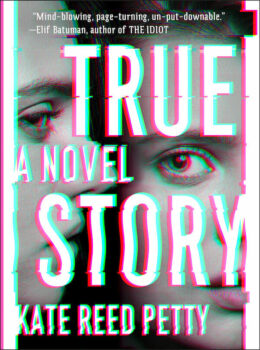 Point of view is something that changes the way the reader engages with the story, as well. Part one is Nick in first person. Part three is Nick in third-person close. Part five is Nick in second person. It feels so perfect I can almost imagine a reader not noticing the grammatical switch.
Point of view is something that changes the way the reader engages with the story, as well. Part one is Nick in first person. Part three is Nick in third-person close. Part five is Nick in second person. It feels so perfect I can almost imagine a reader not noticing the grammatical switch.
The three voices for Nick line up with his emotional maturation process. In part one he is at his most self-obsessed and self-conscious as a teenage boy. That section is also about him wanting to be part of the team and one of the guys. So there’s a little bit of first-person plural—or “we”—in that section as well. He’s trying to channel what he thinks his teammates are thinking and saying and trying to align himself with that. In part three you’re still in Nick’s head, but it’s close third-person, he’s alone and sulking and drinking himself into oblivion because his first serious girlfriend has left him. He’s a little bit unwilling to face himself, so reading him in that close third-person you can see his thoughts, but there’s also a disassociation to his mental state. Also, that part is a pastiche of a Stephen King novel and that also felt like a genre way to write. In part five Nick is sober and white-knuckling through money and relationship problems, so the second-person felt like his mental state. He’s constantly giving himself pep talks and beating himself up, so that second-person felt right for that. I will say this was originally in third-person, and that part is a noir section, a little bit of a Raymond Chandler pastiche. There were a lot of plot mechanics and I had re-written it a lot of times trying to get everything to line up, and I was sick of it, didn’t want to work on it anymore, so I radically changed the voice as a writing exercise just to look at the story from a new angle. I didn’t intend to keep it because second-person is a pet peeve of many writers and readers. It can seem gimmicky or distracting. But it felt right, and I ended up rewriting the whole part in second-person, and that enabled me to crack the plot at the same time.
You used the word pastiche to describe sections that draw on Stephen King and Raymond Chandler. Can you talk about how and why you did that a bit more?
I probably should have said “loving pastiche,” just to be clear that my initial inspiration for both of those sections came from having devoured so many books by those authors at a young age. I don’t think that the final published version of either section will read neatly as a pastiche, but the inspiration came from wanting to use those well-established particular styles of genre writing in order to push the boundaries of how those genres are restrictive. I also wanted the writing to function a little bit like a Trojan Horse—I chose the genres horror and noir in part because those have traditionally been coded as “masculine” in our society; I wanted to play with how a work of feminist fiction could sneak between the lines of that story structure, and bend it to a different angle than it usually goes.
Your attention to structural detail even operates at the level of the line. You vary fonts and spacing, which I assume is to signal readers and mirror how we use modalities like email in the real world. Was that something you came to or the book designers came to?
I heard a story once that editors at the New Yorker when they get stuck on a piece, they’ll put it in the New Yorker font and column layout to see if it’s really a New Yorker piece. I have also heard that writers purposely write in plain fonts and if you write in a beautiful font you can be seduced and not very critical of your own writing. For me the format I’m using really influences the way it’s read so I was very protective of that; luckily, when I worked with the editors and book designers at Viking, they are such a meticulous publisher—they were 100 percent willing to put in the crazy amount of work this book required, and there were so many interesting collaborative conversations about what an email font, for example, should be, and should there be a line break between sections, or just a double space. So all those decisions were made on purpose to match my manuscript plus their expertise as designers and editors to honor the original intention and still look good and be professional.
On that topic, you take a mixed media approach by including emails, Alice’s college entrance essay drafts, transcripts of interviews, and even plays written by the characters. I thought all of these less traditional narrative forms were really successful, but I have read stories and novels where such inclusions feel tedious. Did you use any strategies to make yours successful?
The college essay section of the book is my favorite, and it’s definitely a risk because it asks a lot of readers to stick with it. But there was a risk in expressing redundancy and circular difficulties, a loop of thinking, without being too boring about it, and some of that is instinct and lots of editing, to keep something moving as you’re working through it. What makes things like including newspaper articles work well is if the material resonates with what’s going on with the character emotionally, and even better if the alternate form can have some effect on the plot. When there’s a newspaper clipping, it’s usually just a method for delivering information, but it’s interesting if the character is a journalist and we see that what they’ve written is different from what they believe or we see clues they’re writing something they don’t want to. There has to be another layer or emotional reason you’re using that unusual structure, voice, or found document.
Can you talk about how you came to the idea of using Alice’s college admissions essay draft instead of having Alice tell her version of high school events in a traditional narrative mode like Nick does?
When Alice writes those essays, she is still in a phase where she is not sure she wants to tell the story of what happened to her in high school, and the teacher who is helping her with the essays thinks she’s doing Alice a service with her feedback, but in fact she is restricting Alice’s sense of self and what she allowed to think and say about what happened to her.
The college essays are Alice’s perspective on what happened to her in high school while “Part I: Lax World” is Nick’s perspective on the events. But Alice is different from Nick in that her essays are written with a specific goal—getting into college—while Nick’s narrative is written in a traditional first-person story-telling way. In other words, readers are just hearing about it directly from Nick, without any sense that Nick is writing about it for a reason or to a defined audience like a college admissions board.
True, but Nick’s story is shaped by external forces in analogous ways to Alice’s because he’s telling the story of what happened in high school based on what his lacrosse coach and teammates think would be a good way to tell it. This whole book I’m interested in how the expectations of others shape how we interpret our own lives. The difference is that Nick’s voice is in a more traditional story-telling realm because society encourages him to inhabit this story-telling space. And we can understand how Alice has been thwarted in telling her story up until now. So you’re seeing the original of that in the college essays and this is the dynamic of Alice’s life because her story telling doesn’t fit a story-telling mold. How do you say things that don’t fit in the mold? But the essays do show Alice having a triumph of sorts, even back in adolescence, because she does use the material of what happened to her and attempt to shape it into a story.
Similarly, can you talk about what your thoughts were behind including scripts that Alice and Haley wrote during junior high, before the events Nick describes in Part I: Lax World?
My hope is that the scripts show the girls’ maturation process in those three or four years. I wanted to show Alice’s inherent creative spark as well, what Alice’s voice was before her experiences during and after high school. The scripts are Alice’s original or native language, her original style of writing and interests. Thematically the scripts also show the girls processing the things that are scary about their world. The scripts are about what it means to process a story through horror or exaggerated portrayals. In that sense, they’re miniature versions of what the entire novel is about. The scripts also match closely with things that happen in other places in the novel. So there’s a hint that what you are reading may not be entirely reliable.
In “Part I: Lax World” you sometimes use italics instead of quotation marks to indicate dialogue and sometimes switch to traditional formatting, with quotation marks. It’s extremely unusual to handle dialogue in both ways, especially within the same scene.
I just recently had a reader reach out to me with a question about that choice—which I’m proud of, because most readers haven’t paid attention, which to me means that it feels smooth in the reading experience. It felt like a risk to use different formatting within the same section, but I felt it was thematically important. The form followed the function again here. “Lax World” is about how Nick wanting to be in a mind-meld of sorts with his friends and the italicized dialogue suggest almost subliminal conversation, or a tacit agreement among the boys as to what they are going to say about certain subjects. However, when an authority figure or anyone else, like Haley, challenges or disagrees with Nick or the other boys, then that moment of conflict and challenge is rendered as specific, unique dialogue, and therefore I used standard font and quotation marks. I was really lucky to have fantastic editors at Viking who were willing to copyedit and roll with this unusual formatting, and they caught a few lines I had to change from italics to standard and vice versa based on their input.
What kind of structural challenge would you like to take on in some future project? Is there any novel, for example, you’ve read whose structural approach surprised or impressed you? Perhaps put you in mind of trying to approach a future product in similar fashion?
I love Pale Fire, and I’ve always had a dream of creating some kind of hijacked text that way—maybe like the DVD commentary track on an imaginary film? The temptation to do something wild with formatting or structure is always enormous, but I’m also aware that experimentation for its own sake can be really alienating. I’m always trying to rein myself in to make sure the experimentalism is serving the story and the characters, and never the other way around.


